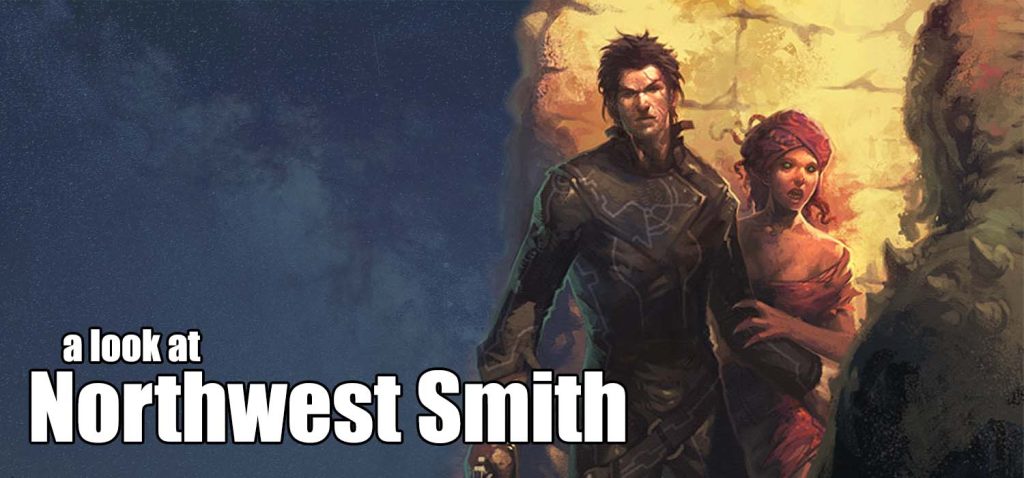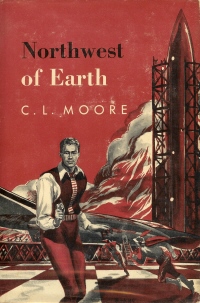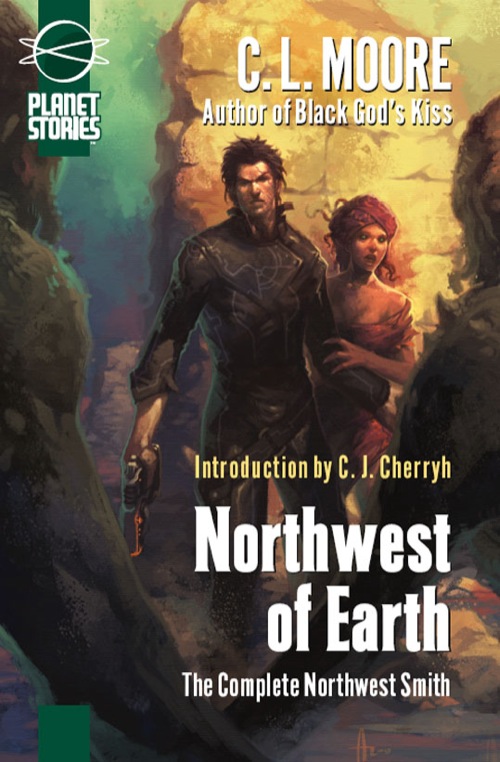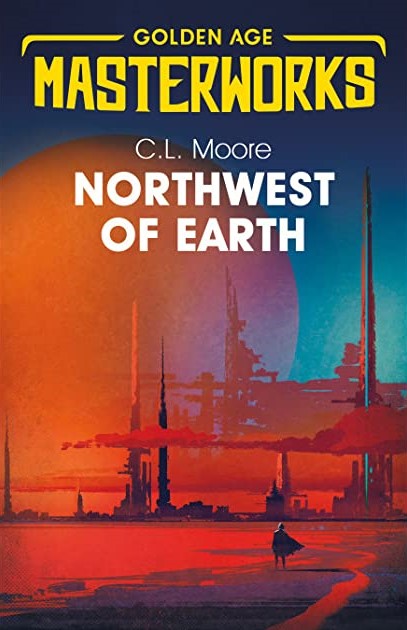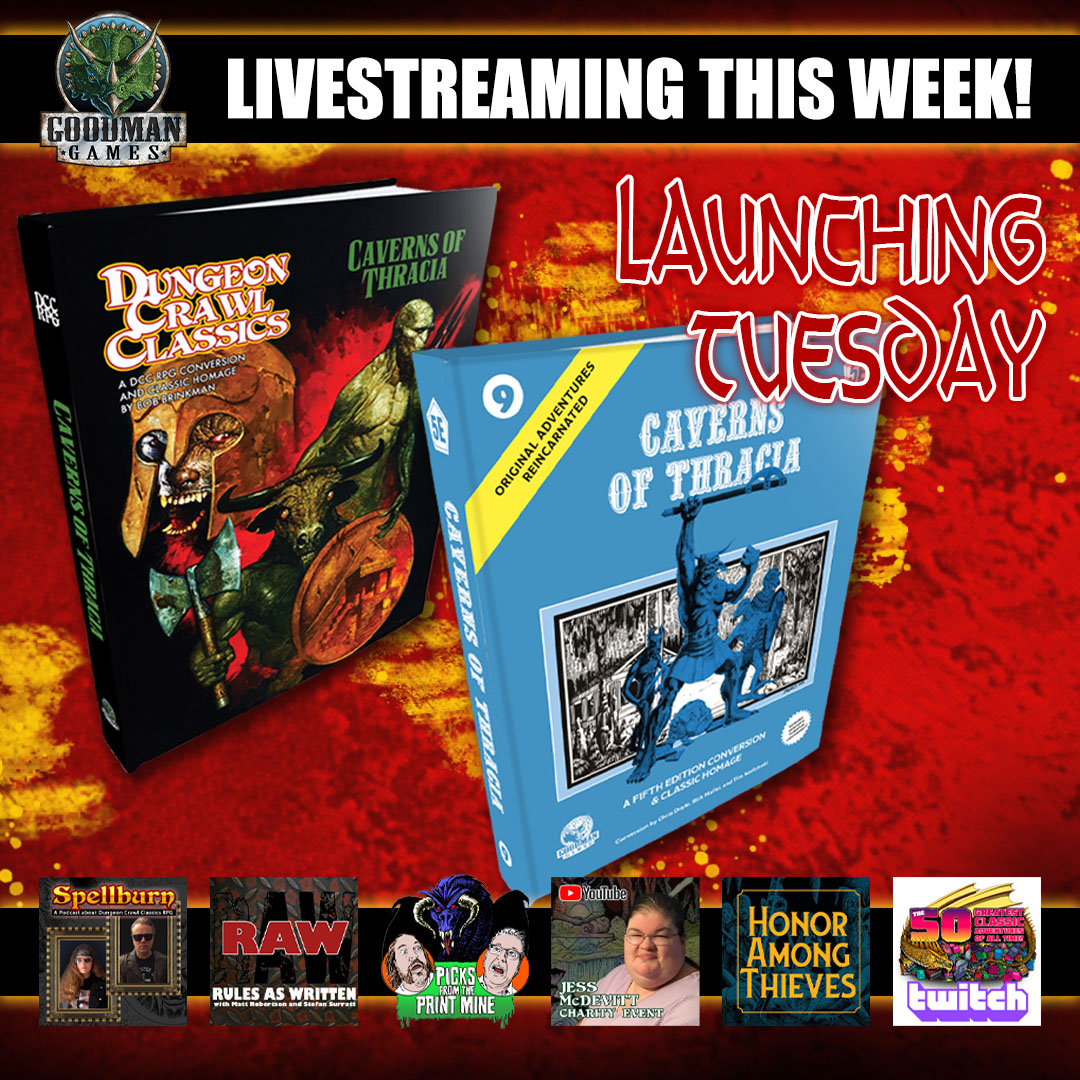Northwest of Earth: A Look at C.L. Moore’s Iconic Space Adventurer
by Bill Ward
Popular media is resplendent with celebrations of the romantic outlaw. From Robin of Locksley to the six gun strapping figures of the American Frontier, or the hardboiled gumshoes of detective fiction, the anonymous masked vigilantes of the pulps, even the globe-trotting adventurers of the Victorian era, and continuing right up to the spice-smuggling space jockeys of science fiction, those that dwell outside society’s rules and expectations make for vicariously interesting protagonists. One such character, C.L. Moore’s cool and ruthless Northwest Smith, falls squarely along the timeline that saw America’s heroes trade in their horses for rocketships and their revolvers for rayguns, all while retaining that tenaciously independent and hyper-competent attitude that is the hallmark of the Outsider Hero.
Smith and Moore debuted together, in Moore’s first short story sale, “Shambleau.” Taking the readers of Weird Tales by storm in 1933 and establishing Moore’s career on a very firm footing, “Shambleau” introduces smuggler-with-a-heart-of-gold Smith, a cool customer with a steady gun hand and “no color eyes,” as a foil for an alien succubus that threatens no mere ethical entanglement, but the very destruction of Smith’s soul. In a pattern that would inform nearly every other Smith tale, “Shambleau” is a horror story with sword-and-planet trappings, its conflicts are emotional and psychological in nature, and its particular strength is Moore’s vivid and imaginative writing. In a recent, more thorough examination of “Shambleau,” I encapsulated the author’s approach thusly: “Moore is an enchanting writer, capable of crafting imagery and conveying emotion in so effective a manner that plot is a secondary concern of hers, her dramatic story beats and resolutions are rooted in theme and metaphor, she does not focus so much on ‘what’ as she does on ‘how.’”
And the Northwest Smith stories are a wonderful collection of ‘how’ stories, tales that aren’t overly concerned with plot and counter-plot, but with establishing an unusual peril and throwing Smith right into it. There are, of course, many femme fatale stories in which, again and again, Smith must prove the equal to superhuman (or supernatural) levels of temptation just as he was confronted with in “Shambleau.” In “Julhi” the alien seductress projects herself into our realm from another dimension, possessing the body and mind of a hapless slave; in “Yvala” the temptress is the mythical Circe, in the same way that Shambleau is medusa, complete with enchanted glade and beast-transformations; in “Black Thirst” the catalyst is this time actually a damsel in distress, part of a breeding program aimed to create perfect beauty in the service of an alien vampire.
‘Formulaic’ has an almost wholly-pejorative meaning when discussing literature, but it’s important to understand these stories in the context of their time. Like Moore’s other famous creation, Jirel of Joiry, the Northwest Smith stories are frequently formula fiction. In Moore’s day, such a formula wasn’t merely a case of giving an editor more of what they wanted, it could also serve as a fledgling writer’s brand. Both of Moore’s heroes are characters who are continually thrust into unnatural situations, and who prevail through sheer strength of will and doggedness of personality. When similar stories of this kind are collected together, the ribs of the skeleton plot can start to show, and some readers may find the experience of reading the collection straight through repetitive.
While there are many examples of formula fiction in the pulps, there are only a handful of writers from the era of the caliber of Moore. Her prose and powers of description are finely honed and, despite not being a plot-driven writer, her pace has a no nonsense briskness even when indulging in a flight of poetic language. Moore has the gift of proportion of the natural storyteller and, again, though one can say that many of her stories are moving through the same basic mechanisms of plot, Moore’s style and creativity keep these stories fresh.
Like in “Dust of Gods,” in which a down-on-his-luck Smith and his devious companion Yarol are again hired for some impossible mission, but this time it’s to investigate the remains of a far-traveled, ancient alien deity. Or “Scarlet Dream,” which sees a comatose Smith living a completely different existence in a dream realm with a female companion who genuinely loves him. Even the mash-up story Moore and her husband Henry Kuttner wrote about Northwest Smith meeting Jirel of Joiry offers a few surprises – not least of which is how good a story it is, which in most cases would feel like a mere ‘stunt’ – allowing both characters to conflict with and compliment one another, while remaining true to their origins. Perhaps one of the biggest divergences from formula is “Lost Paradise,” a story that leaps from a crowded Earth restaurant to the lost gulfs of Martian time, plunging Smith himself backwards as a catalyst for events of immense importance.
The Northwest Smith stories are not what they may appear to be at first glance – the idea of Smith may be every bit the action hero equivalent of John Carter or Leigh Brackett’s Eric John Stark, but his stories seldom rely on action for their resolution. Instead, think of them as psychological horror, weird tales in a space setting. In her introduction to the Paizo edition of Northwest of Earth, C.J. Cherryh said of these tales: “They slide between science and supernatural, what-if and once-upon-a-time; and their scope and sweep has a grandeur that just carries you along willy-nilly. While you’re reading one of her stories, you believe.” And perhaps that’s really what’s at the heart of Moore’s work, the absolute conviction with which these stories of space seduction and extreme temptation were written, a wholly engrossing experience at the hands of a writer whose own seductive gifts play out with each line of prose.
This article is based on the 2007 collection Northwest of Earth from Paizo Publishing’s Planet Stories line, the only complete collection of all Northwest Smith stories.


